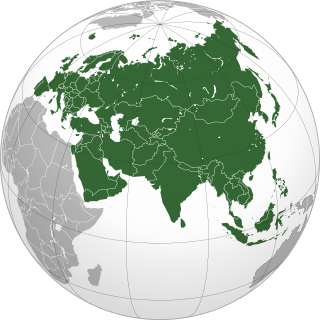
The Isle of Man, also known as Mann, is a self-governing British Crown Dependency in the Irish Sea between Great Britain and Ireland. As head of state, Charles III holds the title Lord of Mann and is represented by a Lieutenant Governor. The government of the United Kingdom is responsible for the isle's military defence and represents it abroad.

Midway Atoll is a 2.4 sq mi (6.2 km2) atoll in the North Pacific Ocean. Midway Atoll is an insular area of the United States and is an unorganized and unincorporated territory. The largest island is Sand Island, which has housing and an airstrip. Immediately to the east of Sand Island across the narrow Brooks Channel is Eastern Island, which is uninhabited and no longer has any facilities. Forming a rough, incomplete circle around the two main islands and creating Midway Lagoon is Spit Island, a narrow reef.

The rock ptarmigan is a medium-sized game bird in the grouse family. It is known simply as the ptarmigan in the UK. It is the official bird for the Canadian territory of Nunavut, where it is known as the aqiggiq (ᐊᕿᒡᒋᖅ), and the official game bird for the province of Newfoundland and Labrador. In Japan, it is known as the raichō (雷鳥), which means "thunder bird". It is the official bird of Gifu, Nagano, and Toyama Prefectures and is a protected species nationwide. Unlike many arctic bird species, ptarmigan do not gain substantial mass to hibernate over winter.

Nikolay Yakovlevich Danilevsky was a Russian naturalist, economist, ethnologist, philosopher, historian and ideologue of pan-Slavism and the Slavophile movement. He expounded a circular view of world history.
The Cosmopterigidae are a family of insects in the order Lepidoptera. These are small moths with narrow wings whose tiny larvae feed internally on the leaves, seeds and stems of their host plants. About 1500 species are described. The taxonomic family is most diverse in the Australian and Pacific region with about 780 species.

Clepsis is a genus of moths belonging to the family Tortricidae. It includes several notable pest species.

Eurasia is the largest continental area on Earth, comprising all of Europe and Asia. According to some geographers, physiographically, Eurasia is a single continent. The concepts of Europe and Asia as distinct continents date back to antiquity, but their borders have historically been subject to change, for example to the ancient Greeks Asia originally included Africa but they classified Europe as separate land. Eurasia is connected to Africa at the Suez Canal, and the two are sometimes combined to describe the largest contiguous landmass on Earth, Afro-Eurasia.

Deception Station is an Argentine antarctic base located at Deception Island, South Shetland Islands.

Cosmopterix attenuatella is a moth of the family Cosmopterigidae described by Francis Walker in 1864. It is widely distributed in the tropics and subtropics of both the Old and New World, including the United States, Bermuda, the Cayman Islands, Virgin Islands, Dominica, Jamaica, Puerto Rico, Trinidad and Tobago, Costa Rica, Brazil, Ecuador, Peru, Argentina, the Canary Islands, Madeira, the Galápagos Islands, Cook Islands, Taiwan, Australia, New Zealand, Madagascar, Seychelles, Mauritius and Saint Helena.
Gisilia stereodoxa is a moth in the family Cosmopterigidae. It is found along the coast of the Mediterranean area and Egypt to Iran and India. It has recently been recorded from Kenya and Namibia.

Coccidiphila is a genus of moths in the family Cosmopterigidae.
Coccidiphila danilevskyi is a moth in the family Cosmopterigidae. It is found in France, Spain, Portugal, Morocco and Tunisia.
Coccidiphila kasypinkeri is a moth in the family Cosmopterigidae. It is found on the Canary Islands.
Coccidiphila ledereriella is a moth in the family Cosmopterigidae. It is found in Southern Europe and on Malta, Sardinia and possibly the Canary Islands, North Africa and Asia Minor.
Coccidiphila patriciae is a moth in the family Cosmopterigidae. It is found on the Canary Islands.
Coccidiphila riedli is a moth in the family Cosmopterigidae. It is found on the Canary Islands.
Coccidiphila nivea is a moth in the family Cosmopterigidae. It is found in the United Arab Emirates.
Coccidiphila silvatica is a moth in the family Cosmopterigidae. It was described by Edward Meyrick in 1917. It is found in Kumaon division, India. The larvae have been recorded feeding on Pinus roxburghii and mealybugs.
Coccidiphila violenta is a moth in the family Cosmopterigidae. It was described by Edward Meyrick in 1916. It is found in Guyana.









